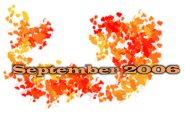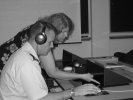
|
 |
|||||
Dedicated to providing information for learning assistance professionals. |
||||||
 |
Focusing for Optimal Study: The Distractions ListBy Mona Pelkey, United States Military Academy, West Point |
|||||
|
One of the toughest challenges in college is minimizing distractions when reading or studying. Many students are aware of the things that distract them, such as too much noise, and common sense dictates that avoiding study areas that are noisy (such as dorm rooms) should alleviate their difficulty. One of the ways to identify and to deal with those distractions is to use a distractions list. The distractions list, an effective personal organization/time management/stress management tool for students, is just what it sounds like it is—it’s a list, created by the student, of the things that interrupt that particular student’s focus during study. There are variations in how a distractions list may be used to help create an optimal study environment. A distractions list can be used as a log in which the student records each time he/she is distracted from study, and what the distraction was. After several study sessions the student looks at the log and notes which distractions are listed most often. Then the student seeks to minimize or eliminate those distractions. For example, if the student records that he/she is distracted 10 times by incoming email, obviously he/she needs to turn off the email popup/chime when he or she is studying/reading/writing. Sometimes students do not realize how many times they are actually distracted until they create the log. Another way that the distractions list can be used is as an enhanced “to-do” list that helps the student to free his/her mind during study. In this case, the distractions list is kept close at hand. During the study session, in addition to recording distractions such as noise, the student records tasks he remembers during his/her study session (“Oh, yeah! Mom’s birthday is next week, so I have to buy her a card!”). The distractions list is right there for the student to write down that thought. Reassured that he/she will not forget anything he/she is supposed to do, the student is better able to let go of that particular thought and return his/her focus to study. However, dealing with some distractions is a little more complicated. If the student has already created a controlled environment conducive to study (quiet, not too comfortable, optimum time of day, etc.), but he/she is distracted by MENTAL noise; i.e. worry over personal issues or upcoming tasks, how can he/she use the distractions list to quiet the thoughts that cloud his/her focus? When the student is distracted by “mental noise” such as racing thoughts or worry, it is a good idea, at the beginning of the study session, for the student to take a moment to write EVERYTHING down that he/she is thinking about that is unrelated to the task at hand. Often, when the student is very busy, this mental noise will be thoughts/worry related to the myriad of tasks he/she must remember to do. After this mental catharsis, the student should very deliberately set the list aside, upside down, and say, “I will look at this list again at [set a specific time]. Until then, I will [read or study this assignment].” Then, the student settles down to study, knowing that his/her thoughts will be available for review at the specified time. Using a distractions list in this way can help students to control the “mental noise” that can spoil an otherwise distractions-free study environment. What happens when the student uses the distractions list? First, the student has a way to record the events that disrupt his study period and it gives him/her a picture of what his/her study period is really like. Second, the student has a way to literally empty his/her thoughts on the page and clear his/her mind for the academic task at hand. Third, he/she has a way to give him/herself permission to let those thoughts go for a specific period of time—the length of his planned study period—and this includes permission to not feel guilty about neglecting something else while studying! Fourth, the student has eliminated fear of forgetting the other tasks he/she was worried about because he/she has created a “to-do” list of reminders that will alleviate those worries. Fifth, the student can check off items accomplished for the added benefits of task organization and personal satisfaction. The multiple applications and benefits of using a distractions list during study make it worth trying with students who find their study habits and environment to be less than ideal. Questions or comments? Contact the author at ym5330@usma.edu. |
||||||
| Home::
Past Articles
:: Conferences
:: Citation
Information :: Feedback
:: About
the Authors :: Subscription
Information :: Submission
Guidelines Site Last Updated September 15, 2006. Sponsored By AccuTrack and NCLCA |
||||||